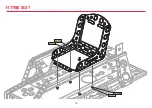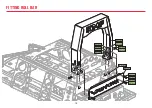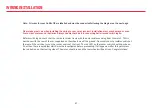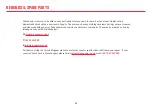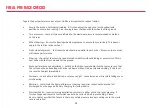
TEST DRIVING & DRIVER TRAINING
25
•
Once your build is complete and the wiring has been double-checked try giving it a test drive! The
bodywork does not need to be in place for testing.
•
Initial driver training should be undertaken with no power to the car. To familiarise drivers with the
steering and brake controls push them around a slalom type course.
•
Once drivers are familiar with steering and braking they can conduct their first powered runs.
These should take place on a hard surface with no obstructions. All spectators must be behind solid barriers.
Goblins are not suitable for use on soft grass surfaces.
•
To limit speed on initial runs the car can be powered using a single battery. This will run the car on
12 volts rather than 24 volts and result in the car running at half speed. To do this connect wire G2C
to the negative terminal and wire G2B to the positive terminal of the one battery. Wire G2A is then not used.
•
Driving should only be conducted with drivers wearing helmet, gloves, eye protection
(visor or goggles), long sleeves and trousers. Long hair should be tucked into the helmet to prevent
it being caught in any moving parts. Once the driver is comfortable and there is a clear open area,
turn on the battery isolator switch at the rear of the car. The driver can then switch on the black
rocker switch at the front of the car. If all is well, the red LED on this switch will then illuminate.
Give the car a gentle push from behind using the roll over bar. As this is done, the driver can press
the throttle button to drive off.
•
If a rasping noise is heard, especially when pulling away, the drive belt is loose and requires correct
tensioning. Failure to correctly tension the belt will result in premature wear and failure.
•
The driver should now practise steering through a course laid out using cones or markers increasing
their pace and switching to running on both batteries as they become more experienced.








